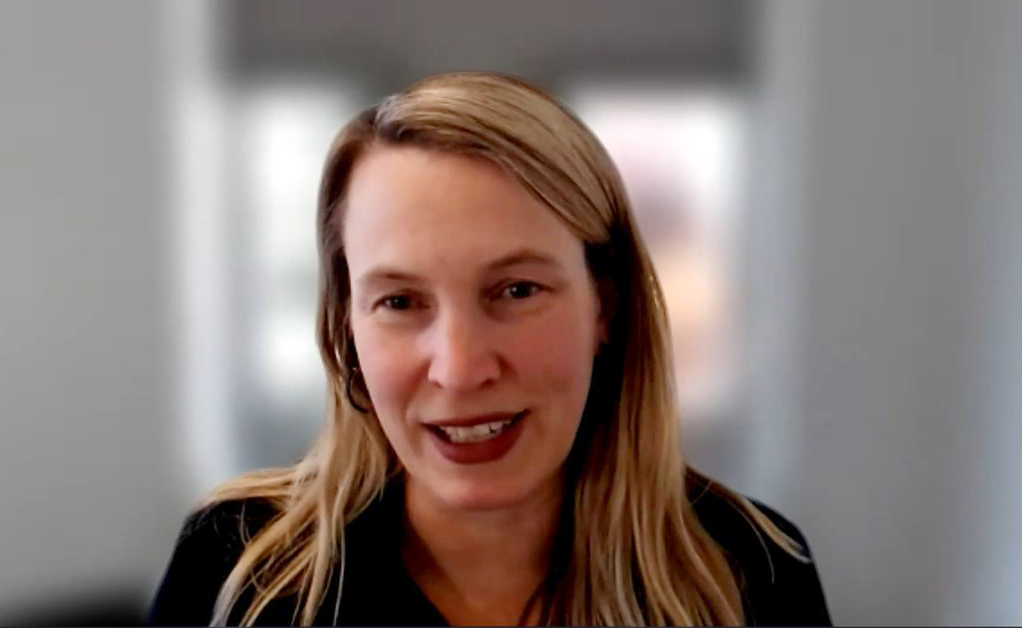![]()
California’s revenues and economic conditions have continued to improve, enabling the state to address some of its greatest threats, such as climate change, the COVID-19 pandemic, homelessness and crime, state Finance Director Keely Martin Bosler told business leaders during a California Chamber of Commerce webinar on January 12.
The Department of Finance (DOF) is forecasting a $45.7 billion budget surplus in the coming year, and Bosler said it’s anticipated that jobs in the state will return to pre-pandemic levels by the end of this year.

Budget Surplus
The recession brought on by the COVID-19 pandemic is unlike any other California has seen in its history, and economists have had to throw away the “old playbook” and “think about what new things are around the corner,” Bosler said.
Data shows the state experienced a steep V-shaped recovery and saw gains across all three big revenue streams: personal income tax, sales tax and corporate tax. However, two significant issues arose: inflation and supply chain problems.
State economists are assuming that these issues will linger for the remainder of this calendar year, but will resolve themselves and return to pre-pandemic trends.
Budget estimations also assume about $14 billion in additional infrastructure spending from the federal Infrastructure Investment and Jobs Act, and project the creation of 75,000 jobs at the program’s peak in 2025.
Bosler attributes the gains to the general fund to an improved economic forecast, a stronger stock market, higher inflation and a greater share of wage gains, but acknowledges that the state is heavily dependent on income tax. Capital gains realizations were at a record level in 2021, with $25 billion in revenue attributed to capital gains.
Last year, the state was more reserved in creating new spending obligations, but the state is now in “a better place,” after having paid off all of its budgetary debt accumulated over the last several decades, the finance director said.
All these economic conditions have given the state the opportunity to make “significant investments to continue economic growth and strengthen California’s future in a way that includes more Californians,” Bosler said.
Budget Summary
Below are highlights of Bosler’s presentation; to view a video of her presentation, click here or visit www.calchamber.com/videos. A PowerPoint of the presentation is available here.
• Business Tax Credits: Due to the state’s economic surplus, some business tax credits will be restored a year earlier than expected. This year’s budget restores research and development credits and net operating loss credits, and proposes an additional $250 million per year for three years for qualified companies headquartered in California that are investing in research to mitigate climate change. The budget also proposes direct investments in climate-related research and development at the University of California system, including $185 million for applied research, regional networks of climate-focused technology incubators, and workforce development and training hubs.
• Small Business:This year’s budget proposes an additional $500 million for the Small Business COVID-19 Relief Grant Program over several years and $150 million to support small businesses previously waitlisted in prior rounds of the relief program. The budget also allocates $3 billion over the next two years to reduce the Unemployment Insurance Trust Fund debt owed to the federal government. Another $45 million is proposed to aid the state’s hard-hit tourism industry.
• Workforce Training: Health care and education have been some of the areas most affected by the labor shortages brought on by the COVID-19 pandemic, Bosler said. To help address this problem, the Governor is proposing $1.7 billion to help train and recruit new teachers, health care and human services workers. Another $215 million in funding is proposed toward the Oil and Gas Well Capping Initiative, with $50 million going toward a pilot program to help retrain oil and gas workers as the state continues to phase out oil production.
• Infrastructure: Almost $20 billion is being allocated to infrastructure projects, including $9.1 billion for high speed rail, regional transit and rail, bike and pedestrian safety, and climate adaptation. Another $1.2 billion is proposed for the movements of goods/ports, with $110 million allocated to workforce training and $70 million to license more truck drivers and data improvements at the ports.
• COVID-19 Paid Sick Leave: Bosler said that Governor Gavin Newsom is calling for a new COVID-19 supplemental paid sick leave (SPSL) program. The details of the new program are not yet known, but it will likely differ from the supplemental paid sick leave adopted in 2021.
The Governor’s budget summary is available at ebudget.ca.gov

